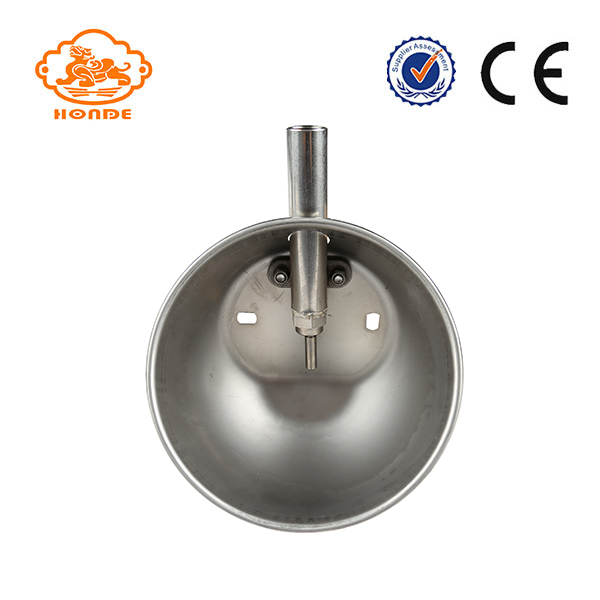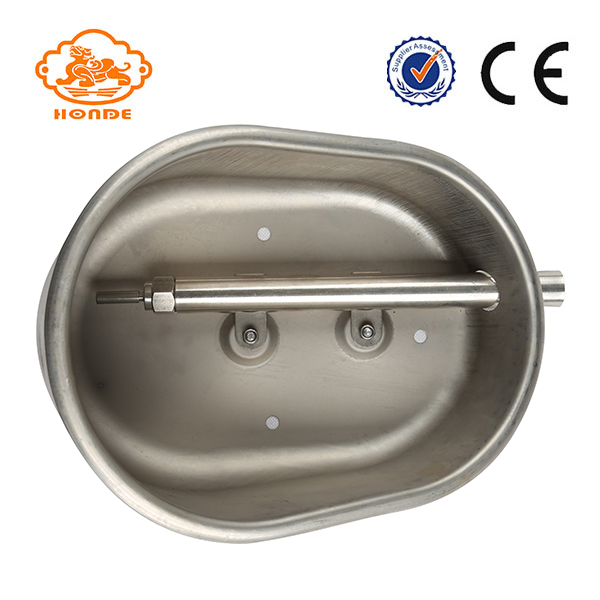Pearl powder, layer powder and shell powder are rich in natural nutrients. According to the analysis: (a) It contains more than 20 mineral trace elements, especially those containing ionized calcium, strontium (antimony), selenium, tellurium, osmium, rubidium, barium, stilbenium, etc. as ordinary people can not be compounded, but also for fish and shrimp etc. The necessary trace elements. Investigations and studies have shown that: In the absence of such elements in artificial water, shrimp and crab sticky shell disease, shaver disease, red shell disease, fish rotting, and bleeding are prone to occur. Especially in the third year of continuous cultivation. (b) It contains more than 20 amino acids. Among them, methionine, valine, isoleucine and phenylalanine are essential substances for fish and shrimp. (c) It contains nutrients such as taurine, porphyrins and metallic active porphyrins, vitamin B family and active peptides.
First, the processing method:
Pearl powder, layer powder and shell powder (also called "three powders") have many processing methods. There are commonly used dry method, wet method, flotation method and simple combustion method. However, it should be pointed out that pearls and their powders are carbonates (such as calcium carbonate, barium carbonate, etc.), and are generally insoluble in water. Even if swallowed by shrimps, crabs, fish and other animals, they are difficult to absorb and digest. Therefore, it must be processed by hand to make it ionized and be in a good state of activity, so that fish, shrimp and other animals can be taken into the body's circulatory system to promote growth and development and enhance disease resistance. Here are some of the methods for processing activity as follows:
1, calcium lactate method. In this method, chemical substitution reaction is performed using carbonate components such as lactic acid, pearl powder, layer powder, and shell powder to produce lactate such as calcium salts, barium salts, and magnesium salts and other soluble salts. Since the calcium content of pearl powder is about 40%, the calcium lactate content is the highest after passing through the lactic acid reaction. It has high solubility in water and is especially soluble in warm water. Hydrolysis of calcium ions is also one of the common calcium products in the domestic market. In addition, lactic acid reacts with other metal salts in pearl powder to produce different crystal water content such as magnesium lactate and zinc lactate. This can also be used to identify the proportion of lactate and its optical rotation, extinction and other properties. Their solubility in relation to temperature can be calculated using the following linear equation in the range of 12°C-35°C:
Y=1.9exp (0.035T). Y: solubility in lactic acid brine; T: temperature °C.
2, calcium citrate method. This method uses citric acid and pearl powder, layer powder and shell powder to produce soluble citrate such as calcium citrate. At present, the citrate method is widely used in the international markets such as the United Kingdom and the United States. Because of the higher degree of hydrolysis of salts and the greater physiological tolerability produced by this method, dissociated acid radicals can also be fish, shrimp, aquatic animals or humans. The body directly absorbs and metabolizes, without any advantages such as retention, combined with pearl powder, layer powder and shell powder to produce calcium citrate, ferric citrate, ferric ammonium citrate, potassium citrate and sodium citrate. Calcium citrate, manganese citrate, etc. All kinds of nourishing and nourishing products for kidney.
3, calcium gluconate method. This method uses gluconic acid and pearl powder, layer powder and shell powder to produce soluble gluconate such as calcium gluconate. Because calcium gluconate is easily absorbed by animal and human body by hydrolysis of calcium and acid radicals, its acid radicals can enter into the three carboxyl cycle, which is very safe and reliable. Therefore, in Japan, the United States and other pharmacopoeias have clearly stated that the calcium salt, potassium salt, magnesium salt, copper salt, sodium salt, etc. can be used as food additives.
4, JZ new law. This method is a synthesis of the above methods, followed by process reform, the use of new solvents and refining processes, especially in the extraction of mineral nutrients, the extraction rate of up to 98.99% -100%. Almost no residual material and waste liquid are discharged. This is in line with scientific feeding such as fish, shrimp, and crab, turning waste into treasure, and achieving healthy breeding purposes. Therefore, this law has been included in the Star Program of the Ministry of Agriculture for further research and application.
Second, production applications:
Pearl powder, layer powder and shell powder have been used in aquaculture for more than 10 years as a feed additive method. The application range involves major domestic freshwater aquaculture areas. The applied varieties include the famous elite species such as cockroaches, cockroaches, cockroaches, cockroaches, cockroaches, shrimps, and crabs, as well as conventional varieties such as tilapia and home fish. The application of "three powders" can increase the yield of adult fish by 9%-31%, and the yield of fingerlings can be increased by 1-2 times or even more than twice. There are two types of application: 1. Internally. The three powders mixed into human feed evenly or made into pellet feed, according to the conventional method of feeding, the amount of three powder incorporation is generally not more than about 0.6% of the total amount of feed is appropriate. 2, Quanchiposa. As fish and shrimp have the ability to continuously absorb calcium, strontium, magnesium, zinc and other trace elements from the external water environment, and their absorption amount is relatively large. In recent years, trace elements such as calcium, strontium, and iron have been severely deficient in many freshwater aquaculture waters in China due to a variety of reasons, especially the use of large amounts of acid such as binary chlorine dioxide, surface-active PVP (polyvidone), and QAC ( Quaternary ammonium) and other very easy to absorb water, calcium, zinc and other metal trace elements form chelates, resulting in fish loose scales, shrimp and crab soft shell, sticky shell, shaking body and other symptoms. Therefore, the use of Quanchiposa "three powders" additives can achieve excellent results.
Third, research and development prospects:
The research and development of “three powders†is essentially the research and development of crustacean by-products, and it is one of the important internationally recognized high-tech bioengineering technologies. In countries such as the World Health Organization (WHO), the United Nations Food Organization (FAO), and Europe, the United States, Japan, and other countries, high-value projects for the use of waste without pollution are highly valued. In 1977, an international seminar on chitin was held in the United States to specifically study and develop application issues. From 1980 to 1992, Japan included this item in the national research and development plan to develop fish disease prevention, anti-bacterial, anti-mildew, anti-corrosion and plant protection, farmland growth, fertilization, seed coating, industrial wastewater treatment, food additives, etc. Achievements. The history of research and application in our country has a long history. However, research on the decentralization of productivity, changeable systems, and aging of equipment has affected the level of achievements and has grown rapidly. Since 2000, the Ministry of Agriculture of the People's Republic of China has included this item in the National Spark Research Project, and has made breakthroughs in the refinement of the product. It has achieved good results in the promotion of shrimp, crab, fish growth and fish disease resistance in aquaculture and its development. Broad prospects.
The Pig Drinking Bowl is a automatic drinking equipment ,used automatic welding process. Unique design that keeps dung out of the pig drinking bowl No blind corners , so the bowl is kept clean all the time The water nipple is placed slightly to one side at the bottom of the bowl and releases only the amount of water that is actually drunk Considerable water savings-considerable reduction in the quantity of slury - diameter of the rolled edge together with the 1.0mm thick stainless steel plate guarantee a very sturdy drinking bowl .
The turned-down edge prevents collection of dirt , which constitutes a bacterial risk . it also eliminates the risk of ear tags getting caught and possibly ripped off , causing ear damage.


Pig Drinking Bowl
Pig Drinking Bowls,Pig Piglet Feeders,Animal Drink Bowl Pig Drinker,Big Size Pig Drinking Bowl,Auto Pig Drinking Water Bowl
HuangHua FengYi Honde Metal Factory , http://www.farrowingcratesfromchina.com